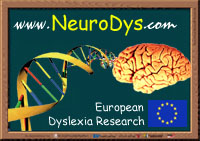Genetic, neural and cognitive characterisation of developmental language disorders
Funding | Participants |
|---|---|
| Ville de Paris Commission Européenne Agence Nationale de la Recherche Ecole de Neurosciences de Paris Agir pour l'audition | Cognitive testing and analysis: Caroline Bogliotti, Stéphanie Iannuzzi, Amanda Saksida, many collaborators in France, and many collaborators in Europe. Neuroimaging: Irene Altarelli, Katarzyna Jednorog, Jingjing Zhao, Lou Scotto di Covella, Mikel Lizarazu, Ghislaine Dehaene-Lambertz, Lucie Hertz-Pannier, Virginie van Wassenhove, Denis Rivière and other collaborators at the Neurospin centre. Anne-Lise Giraud and Katia Lehongre Genetics: The team of Thomas Bourgeron, and collaborators in Bonn and Munich. |
Together with geneticist Thomas Bourgeron at Instituassisat Pasteur and many collaborators all over France, I set up the Genedys project, which explores the genetic bases of developmental language disorders (dyslexia and SLI), in relation to both cognitive and neuroanatomical phenotypes. It is based on the participation of dyslexic, SLI and control children, aged 8 to 12, and their family members (in the case of multiplex families). Children undergo a complete behavioural test battery (around 3 hours of tests covering all the main aspects of general cognitive functioning, oral and written language), donate either a blood or a saliva sample for DNA extraction, and a subset of them undergo a neuroanatomical MRI scan, in order to define a neural phenotype for those disorders.
The Genedys project also became part of the European project Neurodys, led by Gerd Schulte-Körne in Munich, and including many other collaborators. Within Neurodys, around 1500 dyslexic and 1500 control children from 9 countries are behaviourally tested on a common test battery (a subset of the Genedys battery) and donate a DNA sample.
A later collaboration with Anne-Lise Giraud and Katia Lehongre attempts to investigate cortical oscillations supporting auditory sampling of speech in dyslexia.
These efforts were continued in the Dysbrain project, which gathered very high resolution images at the 7 Tesla MRI, and MEG responses to auditory stimuli.
Cognitive aspects of developmental dyslexia
Landerl,
K.*, Ramus, F.*, Moll, K., Lyytinen, H., Leppänen, P. H. T., Lohvansuu,
K., . . . Schulte-Körne, G. (2013). Predictors of developmental
dyslexia in European orthographies with varying complexity. Journal of Child Psychology and Psychiatry, 54(6), 686-694. *equal contributors ![]()
Moll,
K., Ramus, F., Bartling, J., Bruder, J., Kunze, S., Neuhoff, N., . . .
Landerl, K. (2014). Cognitive mechanisms underlying reading and
spelling development in five European orthographies. Learning and Instruction, 29, 65-77.![]()
Cortical oscillations in developmental dyslexia
Lehongre, K., Ramus, F., Villiermet, N., Schwartz, D., & Giraud,
A. L. (2011). Altered low-gamma sampling in auditory cortex accounts
for the three main facets of dyslexia. Neuron, 72(6), 1080-1090. ![]()
Giraud, A. L., & Ramus, F. (2013). Neurogenetics and auditory processing in developmental dyslexia. Current Opinion in Neurobiology, 23(1), 37-42. ![]()
Lehongre,
K., Morillon, B., Giraud, A. L., & Ramus, F. (2013). Impaired
auditory sampling in dyslexia: Further evidence from combined fMRI and
EEG. Frontiers in Human Neuroscience, 7,
454. doi:10.3389/fnhum.2013.00454 ![]()
Neuroanatomy of developmental dyslexia
Altarelli, I., Monzalvo, K., Iannuzzi, S., Fluss, J., Billard, C.,
Ramus, F., & Dehaene-Lambertz, G. (2013). A functionally guided
approach to the morphometry of occipito-temporal regions in
developmental dyslexia: evidence for differential effects in boys and
girls. The Journal of Neuroscience, 33(27), 11296-11301.![]()
Altarelli,
I., Leroy, F., Monzalvo, K., Fluss, J., Billard, C., Dehaene-Lambertz,
G., . . . Ramus, F. (2014). Planum temporale asymmetry in developmental
dyslexia: revisiting an old question. Human Brain Mapping, 35, 5717-5735. ![]()
Jednoróg, K., Marchewka, A., Altarelli, I., Monzalvo, K., van
Ermingen-Marbach, M., Grande, M., Grabowska, A., Heim, S., &
Ramus,
F. (2015). How reliable are grey matter disruptions in specific
reading disability across multiple countries and languages? Insights
from a large-scale voxel-based morphometry study. Human Brain Mapping, 36(5), 1741-1754.![]()
Płoński,
P., Gradkowski, W., Altarelli, I., Monzalvo, K., Van Ermingen-Marbach,
M., Grande, M., . . . , Ramus, F., & Jednoróg, K. (2017).
Multi-parameter machine learning approach to the neuroanatomical basis
of developmental dyslexia. Human Brain Mapping, 38(2), 900‑908.![]()
Zhao, J., Thiebaut de Schotten, M., Altarelli, I., Dubois, J.,
& Ramus, F. (2016). Altered hemispheric lateralization of white
matter tracts in developmental dyslexia: Evidence from spherical
deconvolution tractography. Cortex, 76, 51-62.![]()
Genetic basis of developmental dyslexia
Galaburda,
A. M., LoTurco, J., Ramus, F., Fitch, R. H., & Rosen, G. D.
(2006).
From genes to behavior in developmental dyslexia. Nature Neuroscience, 9(10),
1213-1217. ![]()
Ramus,
F. (2006). Genes, brain,
and cognition: A roadmap for the cognitive scientist. Cognition, 101(2),
247-269. ![]() (Introduction to a Cognition
Special Issue)
(Introduction to a Cognition
Special Issue)
Ramus, F., & Fisher, S. E. (2009). Genetics of
language. In M. S. Gazzaniga (Ed.), The Cognitive Neurosciences IV (pp.
855-871). Cambridge, MA: MIT Press.![]()
Becker, J., Czamara, D., Scerri, T. S., Ramus, F., Csépe, V., Talcott,
J. B., . . . Schumacher, J. (2014). Genetic analysis of dyslexia
candidate genes in the European cross-linguistic NeuroDys cohort. European Journal of Human Genetics, 22, 675-680.![]()
Gialluisi,
A., Andlauer, T. F. M., Mirza-Schreiber, N., Moll, K., Becker, J.,
Hoffmann, P., … Schulte-Körne, G. (2019). Genome-wide association scan
identifies new variants associated with a cognitive predictor of
dyslexia. Translational Psychiatry, 9(1).![]()



